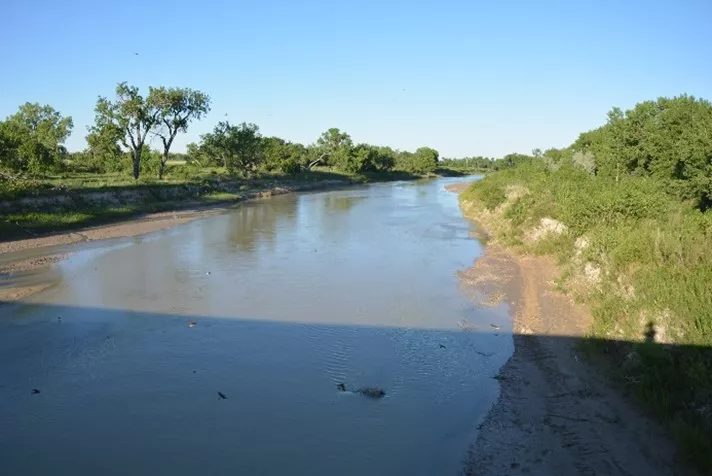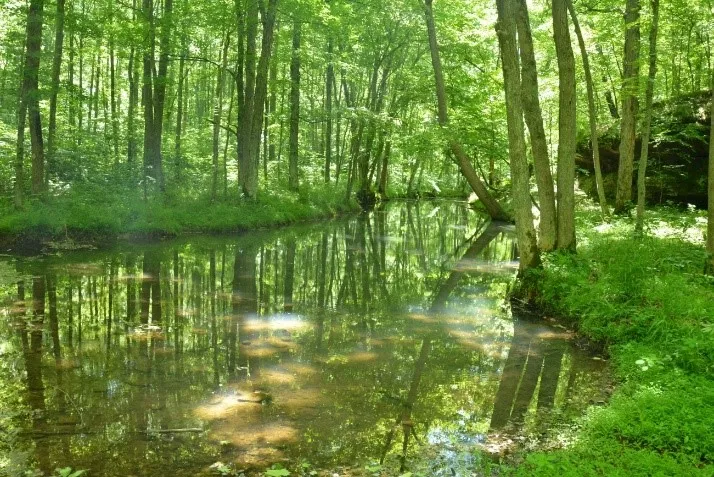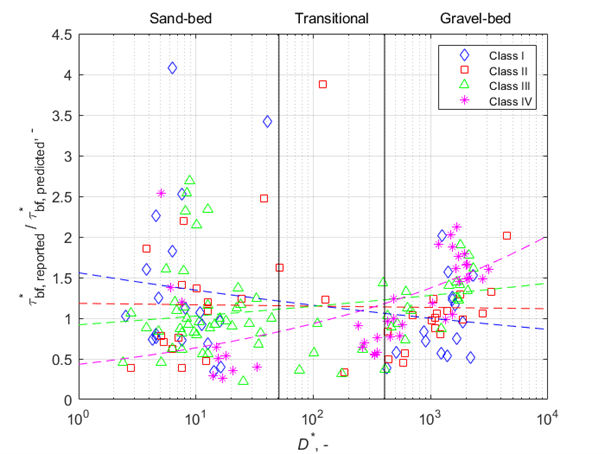Gergely Török, a researcher at the ELKH-BME Water Management Research Group, and Gary Parker, a professor at the University of Illinois at Urbana-Champaign, have investigated the effect of riverbank vegetation on bed width. In the course of their joint research work, they found that the grain composition of the plants’ soil plays a key role in this. If the soil is granular, then the riverbed will grow increasingly narrow with the emergence of vegetation. If, on the other hand, the riverbank is made up of cohesive soil, then an increasingly wider bed can be expected as vegetation grows there. The paper presenting the results of the research was published in the prestigious journal Scientific Reports, part of the Nature portfolio.


Left: White River, Interior, South Dakota, USA. Right: Shawnee National Forest – Panther Den Wilderness, Illinois, USA
(Photographs taken by the authors)
Uncovering the morphological effect of vegetation is a matter that has long engaged the research community. Numerous field observations and laboratory experiments have also made it clear that riverbank vegetation can have a significant effect on the morphological processes of rivers and, therefore, on the geometry of rivers as well. This link is vividly illustrated by this video, for example.
Based on the observations, there emerged the interesting anomaly that, in some cases, the reaction to the growth of riverbank vegetation was a narrowing of the riverbed, while in other cases it widened. The effect of the growth of vegetation was therefore undetermined.
In order to clarify this question, Gergely Török and Gary Parker developed a 1D morphodynamic model in their joint research project, for which they needed a case study to test. This is why they began to explore the features caused by the vegetation.
Based on the morphological properties of 175 river segments, the researchers examined what impact riverbank vegetation had on the width of the riverbed. Using satellite images, they ascertained what vegetation was covering the banks of streams in different parts of the world. They then looked for a relationship between different morphological features and the vegetation. Using the model, the curves fitted to the points drawn for the different classes of vegetation cover gave a surprising explanation of the role of riverbank vegetation. The statistical analysis showed that in the case of cohesive (sand-bed) soil, the average shear stress of the bed decreases with the appearance and proliferation of vegetation, which is accompanied by bed widening. In the opposite case, if the bed is made of granular (gravel-bed) soil, the shear stress increases with the spread of riverbank vegetation, causing the bed to narrow.

The inaccuracy of the shear stress estimation as a function of the characteristic grain size of the bed material. The different colors show the different classes of vegetation cover. Class I: riverbank strip without vegetation – blue; Class II: vegetation cover below 5% – red; Class III: vegetation cover between 5% and 50% – green; Class IV: vegetation cover greater than 50% – purple.
(Source: Török and Parker, 2022)
Their paper elicited an international response and the authors were invited to present their research work at the University of Turin (Politecnico de Torino) in November 2022.
The project was implemented within the framework of an OTKA postdoctoral excellence program scholarship (135037) awarded to Gergely Török, and with the support of a János Bolyai Research Scholarship from the Hungarian Academy of Sciences.